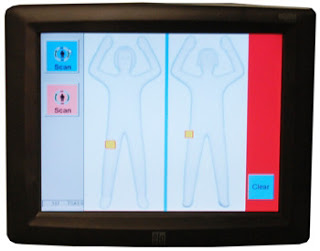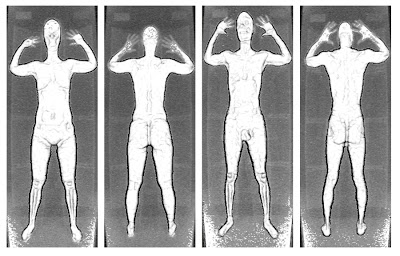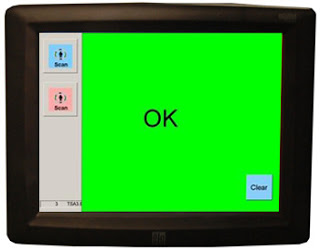Happy new year! Over the holidays, I read an article titled “The TSA Is Laughing at You” talking about what happens in the resolution rooms where body scanner images are viewed. We’ve talked about this many times in the past, but information is often spread through uninformed sketchy third-hand sources. So, I just wanted to post on privacy issues again.
First
off, I want to make it clear that since the implementation of new software on our body scanners,
many of the rooms are no longer in use. Instead, a generic image is used for millimeter
wave scanners. You can read more about the software here. This is what the image looks
like:
 |
| Millimeter Wave Image |
These
resolution rooms are still used in locations where backscatter machines are in
place. For units that do not yet have the new software, TSA has taken all
efforts to ensure passenger privacy. The officer who assists the passenger
never sees the image the technology produces and the officer who views the
image is remotely located in a secure resolution room and never sees the
passenger. The two officers communicate via wireless headset. The resolution
room is used only for the viewing of the images and is not a gathering place or
break room for other officers as the officer viewing the images has to be
focused in order to prevent any dangerous items from entering the airport.
Advanced
imaging technology cannot store, print, transmit or save the image, and the
image is automatically deleted from the system after it is cleared by the
remotely located security officer. Officers evaluating images are not permitted
to take cameras, cell phones or photo-enabled devices into the resolution room.
Initially, it was feared by the traveling public that these images would be
leaked and posted online. This has not happened. To
further protect passenger privacy, backscatter technology has a privacy filters
that blur images.
This
is the image our officers see from the viewing room.
 |
| Backscatter Image |
You
can read even more about the body scanners here: http://www.tsa.gov/traveler-information/advanced-imaging-technology-ait
If
you have a travel related issue or question that needs an immediate answer, you
can contact us by clicking here.





 Why did TSA decide to use backscatter instead of millimeter wave advanced imaging technology (AIT)?
Why did TSA decide to use backscatter instead of millimeter wave advanced imaging technology (AIT)?